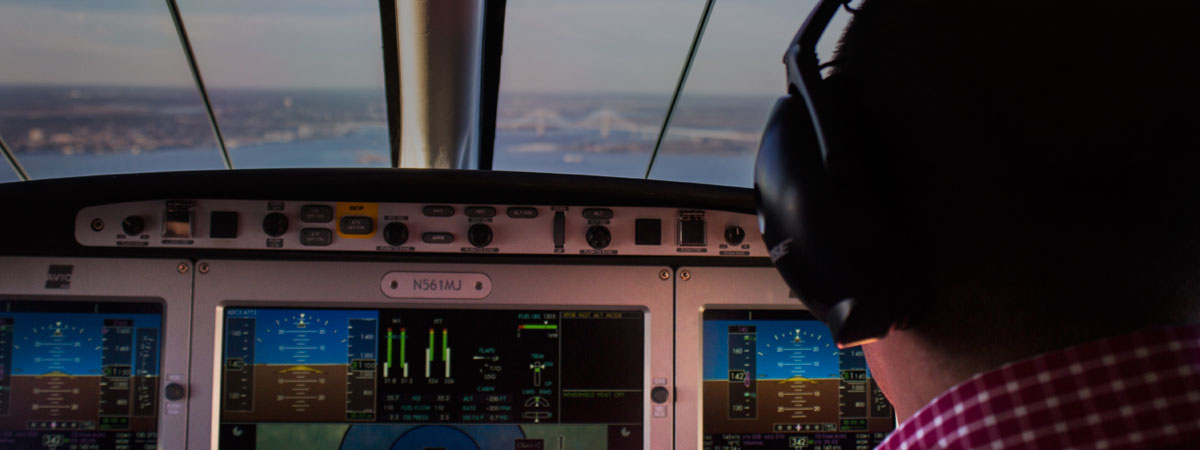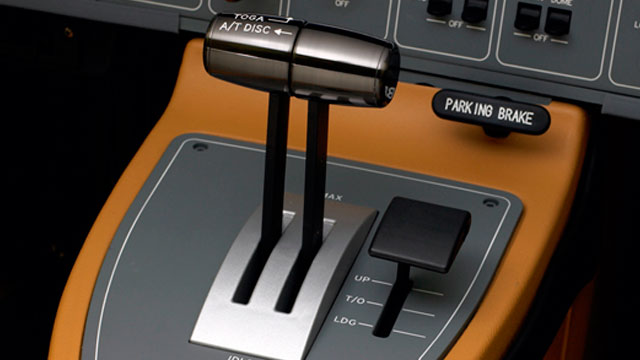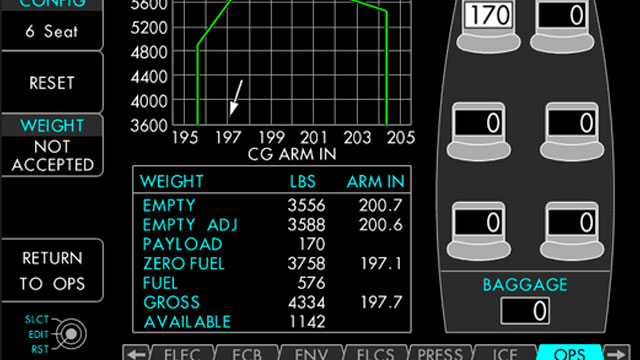Before You Begin Your Training
Pilots are required to possess a Private Pilot Certificate with Instrument-Airplane Land rating, and a Third Class
Airman Medical Certificate to enter the Eclipse Jet Type Rating course. You may perform your multi-engine rating
in the Eclipse Jet. EAI recommends obtaining your multi-engine rating prior to training in the Eclipse Jet.
The prerequisites to the type rating training focus on a basic knowledge foundation for high altitude flight in turbojet
aircraft, skill assessment to determine readiness for type rating training, and preparation for emergency situations,
which may be encountered during turbojet operation.
Jet Basics introduces the basics of operating a jet aircraft in the high altitude environment. For those
with little or no turbojet experience, the Jet Basics course is very beneficial. Jet Basics is an online
/ DVD course.
Exemptions to Jet Basics
The pilot may be exempt from Jet Basics if he/she already holds a turbojet type rating without a pilot
in command limitation and has logged at least 25 hours pilot in command time in a turbojet airplane.
The Eclipse Flight Skills Assessment evaluates a pilot’s readiness to begin type-rating training in the Eclipse
Jet by assessing the candidate’s basic instrument skills. The Flight Skills Assessment is performed in
your current aircraft, by a Flight Instructor of your choice, in coordination with EAI. EAI may perform
this assessment in the Eclipse Jet as an alternative. The Flight Skills Assessment criterion is equivalent
to an instrument proficiency check.
Exemptions to the Flight Skills Assessment
The pilot may be exempt from the Flight Skills Assessment if he/she meets either of the following instrument
currency requirements:
- Instrument Proficiency Check or equivalent: Within the past 6 months
- Instrument flight time last 90 days: 5 hours
- Instrument approaches last 90 days: 10
The Emergency Situation Training Program is comprised of Upset Recovery Training and Aviation Physiology
Training. Emergency Situation Training augments traditional aircraft type training in ways that can better
prepare pilots for unexpected situations and substantially influence the probability of safe outcomes.
EST is designed to provide Eclipse Jet pilots the information and experience required to deal with situations
involving an unexpected aircraft upset or a loss of pressurization.
Upset Recovery Training will be conducted by third party training organizations authorized by EAI.
These training organizations comply with the EAI requirements as well as the upset training guidelines
in FAA Advisory Circular 61-137A. Students may select the authorized training organization that best suits
their needs.
Aviation Physiology Training may be completed through an online / DVD course covering the appropriate subjects.
Exemptions to Emergency Situation Training
The pilot may be exempt from either or both components of Emergency Situation Training if he/she presents
evidence of recent completion of equivalent training.
Your Initial Type Training
The ground school portion of the Eclipse Jet Type Rating course includes classroom instruction, and cockpit procedures
training. Knowledge training subjects will include aircraft systems and automation, single pilot resource management,
risk management, personal minimums, and aircraft performance planning.
The classroom training may also be accomplished through an online computer based training program provided by Eclipse
Aerospace or Simcom Training Centers.
Cockpit Procedures Training demonstrates normal and abnormal operation of Eclipse Jet systems and automation. Instructors
may conduct the cockpit procedures training in a training device, or the actual airplane.
The typical type-rating course includes a minimum of eight lessons in the aircraft, or simulator. The flight training
starts slow and methodically builds in complexity. In the introduction flight the pilot will learn visual maneuvers
such as Takeoffs and Landings. Towards the completion of training the pilot will gain experience in simulated abnormal
situations including, wind shear recovery, engine failures, and other malfunctions. At the conclusion of training
the pilot will demonstrate their proficiency of the type rating practical test standards to an Examiner. dA typical
check ride profile consists of the following events.
- Takeoff / Departures
- Steep Turns
- Stalls
- Unusual Attitudes
- Precision Approach – 2 Engines – to a missed approach
- Non-Precision Approach – 2 Engines – to a missed approach
- Non-Precision Approach to a Circle to land maneuver
- Simulated Engine failure on takeoff
- Precision Approach – Simulated Single Engine – to a missed approach
- Precision Approach – Simulated Single Engine – to a full stop landing
Simulator training is performed at
Simcom Training Center Park South location in Orlando, FL.
For more information, please contact us at Training@eclipse.aero.
Mentoring: Training Beyond the Classroom
Upon completion of the type rating practical test, the training experience is continued via the Mentor Program. This
program is intended to provide the newly type rated Eclipse Jet pilot the ability to operate in the airspace system
with an increased level of safety. Although EAI has designed the Eclipse Jet to be highly automated for single
pilot operation, the airspace system presents a wide variety of airspace, weather, and other operating conditions
that the pilot may not have experienced during initial training. EAI has designed the Eclipse Jet mentoring program
to be events-based and provide the pilot with sufficient exposure to events or situations that the pilot is likely
to experience during a wide range of operations, tailored to their specific operating profile. The focus of this
phase of training will be situational awareness, thought process, and decision making while acting as a solo pilot.
The EAI representative will be a Mentor in the truest sense—a trusted counselor and teacher. Mentoring is not a
second check ride, nor a pass/fail situation. It is intended to be an enjoyable and rewarding maturation experience.
EAI, using
FAA Advisory Circular 61-137A, will specify a range of flight hours, based on previous flight experience. Each
customer will propose a mentoring profile to his/her Mentor prior to beginning the mentoring phase. The profile
will represent the typical mission(s) and environment, which are expected to be flown by the customer on a routine
basis. These missions may be flown in conjunction with your business trips to maximize efficiencies.
Exemptions from the mentoring program requirement
EAI has designed the Eclipse Jet mentoring program especially for pilots with low flight time and/or low experience
in turbine aircraft. EAI will, under certain conditions, exempt very experienced pilots from the mentoring requirement.
A pilot's first type rating is subject to
14 CFR 61.64 when conducted in the Simulator. For those pilots training in the simulator EAI cannot exempt
a pilot from the minimum supervised operating experience specified in 14 CFR 61.64 (g), if those provisions apply.
In-aircraft training is not subject to 61.64.
Differences: Preparing for Your Jet
Eclipse 550 Differences Training is required for those pilots transitioning from earlier versions of the Eclipse
Jet intending to fly as PIC in the
Eclipse 550.
The only prerequisite for this training is a basic understanding of GPS WAAS concepts and capabilities, to include
the various types of instrument approaches capable of being flown.
This course is organized into three components: classroom training, cockpit procedures training, and flight training.
Ground training will describe and explain the systems that are new to the Eclipse 550 pilot such as Auto-Throttles,
Anti-Skid Brakes, Dual Flight Management Systems, etc. Cockpit procedures training will provide demonstration and
practice on the new systems and their operation. Finally, the flight training component will allow the pilot to
first practice flight operations with new systems, and then demonstrate proficiency to type rating standards.
Recurrent: Honing Your Skills
Recurrent training is an annual requirement for all pilots who act as pilot in command of a turbojet aircraft in
accordance with
14 CFR 61.58. Recurrent training involves classroom academics as well as flight sessions in an Eclipse Jet
or level D simulator. The goal of recurrent training is to ensure that required knowledge and skills have not deteriorated
and to stay updated on new requirements and new aircraft capabilities. Recurrent training emphasizes reinforcement
of skills such as automation management, effective pre-flight planning, Single Pilot Resource Management (SRM),
and risk management.
Classroom training is designed to provide the pilot with supplemental knowledge on selected topics relating to the
continued safe operation of the Eclipse Jet. Knowledge training subjects will include aircraft systems review,
current operational topics and safety trends, seasonal operations issues, and a review of the Flight Training and
Standards Manual. Pilots will also have an opportunity to share/discuss any operating issues experienced while
operating the Eclipse. EAI will update the course frequently to respond to changing operational issues.
Flight or Simulator sessions are intended to allow practice of required and selected events before finally demonstrating
proficiency to the type rating practical test standards on the 61.58 proficiency check.
Simulator training is performed at
Simcom Training Center Park South location in Orlando, FL. For pilot’s choosing in-aircraft training the primary
locations are
Albuquerque International Sunport in Albuquerque, NM and Chicago Executive Airport in Wheeling, IL. EAI may
conduct recurrent training in other airport locations as requested.
Train in SimCom's Level-D Simulators
From their training centers located in Orlando, Florida,
SimCom offers business and general aviation pilots the best quality simulator training at the best prices
in the industry.
Personalized training for the Eclipse Twin-Engine Jet
No more big classes with the same scripted information every time. Classes at SimCom have a maximum of two pilots,
and the information presented is driven by your interest and needs. Your classroom instructor also handles your
simulator sessions, so there is consistency to your training.
State of the Art Simulators
SimCom's jet simulators will feel as familiar to you as your own aircraft because they are crafted from actual
fuselage sections and original components. And our advanced, wide-screen visual system technology delivers a
realistic sensation of motion. The cost-effectiveness of the SimCom technology means better value for our customers
compared to other simulation training environments.
Learn more at SimCom's website,
www.simulator.com.




